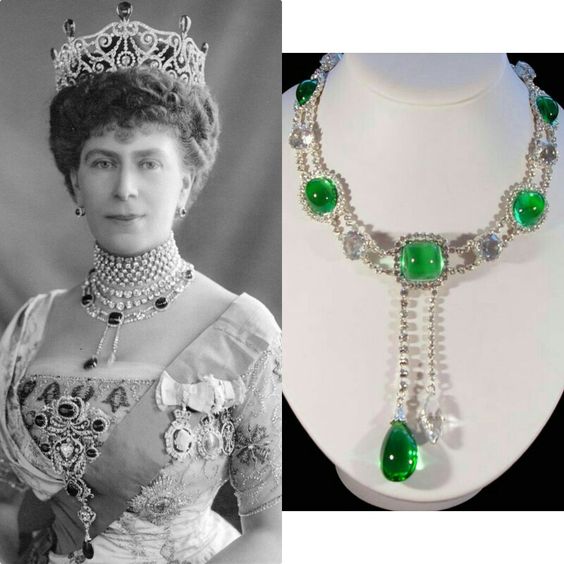Symbology and uses of Emeralds in Egypt
Emeralds have a fascinating history in ancient Egyptian civilization, where they were valued not only for their beauty but also for their symbolic meanings and practical uses. From the mines of the Red Sea to the royal palaces, emeralds left an indelible mark on Egyptian culture.
Emeralds arrived in Egypt from the Red Sea mines and other nearby regions, being considered highly valuable gems since ancient times. The Egyptians deeply appreciated their intense green color, associating it with vegetation, fertility, and life itself.
In Egyptian society, emeralds had multiple uses and meanings:
- Symbol of rebirth: It was believed that emeralds had the power to bring new life and renewal, being used in amulets and ceremonial objects associated with resurrection and eternity.
- Protection and power: Emeralds were considered powerful talismans that protected against evil and granted power and authority to those who possessed them, especially royalty and priests.
- Connection with the divine: The Egyptians associated emeralds with deities like Isis, goddess of motherhood and magic, believing that these gems had a special connection with the divine.
- Wealth and status: The use of emeralds was reserved for the elite and royalty, being symbols of wealth, power, and social status.
- Healing and recovery: It was believed that emeralds had healing properties and could alleviate physical and emotional illnesses, being used in traditional medicine practices and healing rituals.
- Harmony and balance: The green color of emeralds symbolized harmony between the body and soul, promoting inner peace and emotional balance.
The Arrival of Emeralds in Egypt
Emeralds arrived in Egypt from various sources and regions, with their arrival route being a combination of trade, exploration, and mining exploitation. These acquisition routes were crucial for the presence and significance of emeralds in Egyptian culture.
Local mines: Egypt had its own emerald mines in the Red Sea region, especially in areas like Wadi Sikait and Wadi Gamal. These mines provided a direct source of emeralds for the Egyptians, who valued and used them in their own society.
Importation from neighboring regions: In addition to their local mines, Egypt imported emeralds from nearby regions like Nubia, which was rich in mineral resources. Trade routes connected Egypt with these gem-rich areas, facilitating the exchange of emeralds and other products.
Intermediaries and caravans: Commercial caravans and intermediaries played a crucial role in transporting emeralds to Egypt. These traders traveled by land and sea, carrying not only emeralds but also other valuable goods.
Cultural exchange: Cultural exchange and interaction with neighboring civilizations also contributed to the arrival of emeralds in Egypt. Commercial and diplomatic relations with countries like Mesopotamia and Persia facilitated the flow of precious gems to Egypt.
Exploration and expansion: As Egypt expanded and explored new regions, it also discovered and secured additional sources of emeralds. Expeditions and mining activities were integral to the continuous acquisition of emeralds to meet internal demand.
Usos de las esmeraldas en Egipto
Las esmeraldas se utilizaban en Egipto de diversas maneras:
- Joyería real: Las esmeraldas eran utilizadas en la creación de joyas para la realeza y la élite egipcia. Eran incrustadas en coronas, collares, brazaletes, anillos y otros adornos, destacando la riqueza y el estatus de quienes las portaban.
- Amuletos protectores: Las esmeraldas se consideraban poderosos amuletos protectores que ofrecían defensa contra el mal, las enfermedades y otros peligros. Eran usadas como talismanes personales o incrustadas en objetos de protección.
- Objetos ceremoniales: Las esmeraldas se empleaban en objetos ceremoniales y religiosos, como estatuas de deidades, sarcófagos, amuletos de enterramiento y otros artefactos asociados con rituales sagrados y prácticas funerarias.
- Decoración de objetos sagrados: Se tallaban esmeraldas para decorar objetos sagrados y rituales, como vasijas ceremoniales, estatuas de dioses y templos. Estos adornos resaltaban la importancia espiritual y simbólica de las esmeraldas en la religión egipcia.
- Ofrendas a los dioses: Las esmeraldas eran ofrecidas como ofrendas a los dioses en ceremonias religiosas y rituales. Se consideraban regalos sagrados que expresaban devoción y respeto hacia las deidades egipcias.
- Propiedades curativas: Se creía que las esmeraldas tenían propiedades curativas y terapéuticas. Se usaban en prácticas de medicina tradicional y rituales de sanación para aliviar enfermedades físicas y emocionales.
- Simbolismo de fertilidad: Las esmeraldas estaban asociadas con la fertilidad y la abundancia en la agricultura. Se utilizaban en amuletos y rituales relacionados con la prosperidad y el crecimiento.
Paula A. Bonilla
Social communicator and journalist from Sergio Arboleda University in Colombia. She is also a jeweler and is passionate about constantly learning about precious gems and national high jewelry.
Currently, she is working for one of Bogotá's most important jewelry stores, Emerald by Love. This jewelry store has over 40 years of experience and has 2 physical branches in the capital city of Colombia, located in the city center.


